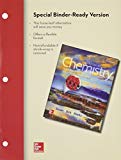
Concept explainers
(a)
Interpretation:
The type of nuclear decay, the unstable nuclide
(a)
Explanation of Solution
If the
The mass number
The
The number of neutrons
The
Since the
Therefore, the unstable nuclide,
(b)
Interpretation:
The type of nuclear decay, the unstable nuclide
(b)
Explanation of Solution
If the
The mass number
The atomic number
The number of neutrons
The
Since the
Therefore, the unstable nuclide,
(c)
Interpretation:
The type of nuclear decay, the unstable nuclide
(c)
Explanation of Solution
If the
The mass number
The atomic number
The number of neutrons
The
Since the
Therefore, the unstable nuclide
(d)
Interpretation:
The type of nuclear decay, the unstable nuclide
(d)
Explanation of Solution
If the
The mass number
The atomic number
The number of neutrons
The
Since the
Therefore, the unstable nuclide,
(e)
Interpretation:
The type of nuclear decay, the unstable nuclide
(e)
Explanation of Solution
If the
The mass number
The atomic number
The number of neutrons
The
Since the
Therefore, the unstable nuclide,
Want to see more full solutions like this?
Chapter 15 Solutions
Combo: Loose Leaf for Introduction to Chemistry with Connect Access Card Chemistry with LearnSmart 1 Semester Access Card
- What are the two principal differences between nuclear reactions and ordinary chemical changes?arrow_forwardA sample of rock was found to contain 8.23 mg of rubidium-87 and 0.47 mg of strontium-87.. (a) Calculate the age of the rock if the half-life of the decay of rubidium by emission is 4.71010 y. (b) If some S3887r was initially present in the rock, would the rock be younger, older, or the same age as the age calculated in (a)? Explain your answer.arrow_forward
 General Chemistry - Standalone book (MindTap Cour...ChemistryISBN:9781305580343Author:Steven D. Gammon, Ebbing, Darrell Ebbing, Steven D., Darrell; Gammon, Darrell Ebbing; Steven D. Gammon, Darrell D.; Gammon, Ebbing; Steven D. Gammon; DarrellPublisher:Cengage Learning
General Chemistry - Standalone book (MindTap Cour...ChemistryISBN:9781305580343Author:Steven D. Gammon, Ebbing, Darrell Ebbing, Steven D., Darrell; Gammon, Darrell Ebbing; Steven D. Gammon, Darrell D.; Gammon, Ebbing; Steven D. Gammon; DarrellPublisher:Cengage Learning Chemistry for Engineering StudentsChemistryISBN:9781337398909Author:Lawrence S. Brown, Tom HolmePublisher:Cengage Learning
Chemistry for Engineering StudentsChemistryISBN:9781337398909Author:Lawrence S. Brown, Tom HolmePublisher:Cengage Learning Introductory Chemistry: A FoundationChemistryISBN:9781337399425Author:Steven S. Zumdahl, Donald J. DeCostePublisher:Cengage Learning
Introductory Chemistry: A FoundationChemistryISBN:9781337399425Author:Steven S. Zumdahl, Donald J. DeCostePublisher:Cengage Learning ChemistryChemistryISBN:9781305957404Author:Steven S. Zumdahl, Susan A. Zumdahl, Donald J. DeCostePublisher:Cengage Learning
ChemistryChemistryISBN:9781305957404Author:Steven S. Zumdahl, Susan A. Zumdahl, Donald J. DeCostePublisher:Cengage Learning Chemistry: An Atoms First ApproachChemistryISBN:9781305079243Author:Steven S. Zumdahl, Susan A. ZumdahlPublisher:Cengage Learning
Chemistry: An Atoms First ApproachChemistryISBN:9781305079243Author:Steven S. Zumdahl, Susan A. ZumdahlPublisher:Cengage Learning





